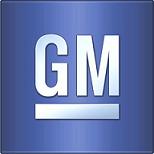GM Outlines Strategy To Slash Fuel Consumption
 General Motors Chairman and CEO Dan Akerson took a unique message to the Lone Star State on March 6, telling participants in an energy conference that America is on the right track as it curbs consumption and develops domestic resources while curbing fuel imports. The choice of doing so in a place as synonymous with oil as Texas was not by accident.
General Motors Chairman and CEO Dan Akerson took a unique message to the Lone Star State on March 6, telling participants in an energy conference that America is on the right track as it curbs consumption and develops domestic resources while curbing fuel imports. The choice of doing so in a place as synonymous with oil as Texas was not by accident.
The former Naval Academy graduate also used his speech to a conference hosted by global consulting firm IHS to outline GM’s plans for sharply improving the fuel economy of its products over the coming years.
Today’s typical vehicle delivers an average 23 miles per gallon in real world use, up from 13 mpg in 1975, when the first Corporate Average Fuel Economy, or CAFE, standard was enacted. The auto industry recently reached terms with the White House on an increase to 54.5 mpg by 2025 – though with the credits available through the revised mandate, and due to the quirks of testing procedures, something in the low to mid-40 mpg range will be closer to reality for American motorists.
Despite signing on, auto industry insiders have sounded alarms about the challenges – and costs – of meeting the new CAFE rules. Akerson used his speech to outline a variety of steps GM will take:
- Mass reduction will be critical, Akerson suggesting a 10 percent reduction in curb weight will yield a 6.5 percent decrease in fuel consumption. The actual GM goal is closer to 15 percent
- To get there, the maker will take steps like switching to lighter materials like aluminum, nano steels, and carbon fiber
- It is improving the thermodynamic efficiency of the notoriously energy-inefficient internal combustion engine with technologies like turbochargers, direct injection, variable valve timing, and cylinder deactivation
The latter approach disables some of an engine’s cylinders when demands for power are low.
All told, Akerson claimed that the new technologies GM is adopting will save a combined 675 million barrels of oil between 2011 and 2017, "a figure nearly equal to (all U.S.) oil imports from the Persian Gulf in 2011."
 General Motors Chairman and CEO Dan Akerson took a unique message to the Lone Star State on March 6, telling participants in an energy conference that America is on the right track as it curbs consumption and develops domestic resources while curbing fuel imports. The choice of doing so in a place as synonymous with oil as Texas was not by accident.
General Motors Chairman and CEO Dan Akerson took a unique message to the Lone Star State on March 6, telling participants in an energy conference that America is on the right track as it curbs consumption and develops domestic resources while curbing fuel imports. The choice of doing so in a place as synonymous with oil as Texas was not by accident.